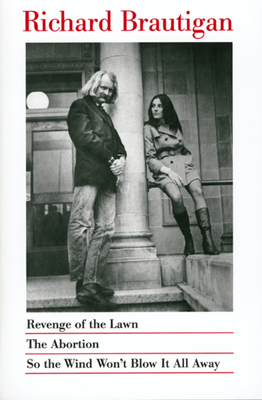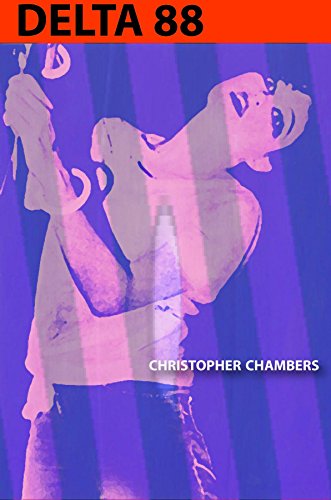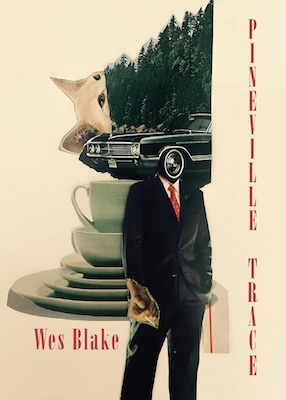Flash fiction is a form that often skirts the line between narrative poetry and short fiction, offering a depth of narrative and poetic expression.
When I think about books that have had the most palpable impact on me, I realize that many of them use innovative forms. And many of the most memorable flash fiction books combine form and content in unexpected ways. Betsy Reed argued that one of most important things we can learn from the work of novelist Milan Kundera is “[t]he inseparability of form and content”. And this idea about how form and content are inseparable helps explain why innovative forms in literature are so jarring, so memorable. Every form offers unique strengths and opportunities. And by combining various forms and content in deliberate and unconventional ways, unexpected depths and ranges of expression are possible. The following eight works of flash fiction use innovative forms in the service of their compelling narratives, and I explore how their form adds to their power.
Palm of the Hand Stories by Yasunari Kawabata
A glance at the table of contents tells the tale. Only two or three pages separate these brief flashes of stories, which Kawabata called “palm-of-the-hand stories” because they were small enough to hold in your palm. The titles are ripe with meaning, much like a poetry collection where titles bear a lot of the weight of meaning. And the titles are often small things —“The Ring”, “Canaries”, “Photograph” “Glass”, Summer Shoes”, ”Umbrella”, and “A Child’s Viewpoint”. Consider how poetic the prose leans. The page-and-a-half-long flash story “The Girl Who Approached the Fire” ends with these lines after the narrator dreams he sees a girl running toward a fire because she does not want to be near him: “In a dream there is no bluffing or pretense.” And then goes on to leave this line standing by itself after a line break—a loud and terse ending: “I felt desolate to think so”. Another flash story from the collection called “The Sparrow’s Match Making” begins with this: “Long accustomed to a life of self-indulgent solitude, he began to yearn for the beauty of giving himself to others.” Two short pages later, after hopelessly considering whether he will ever find a wife, flipping a coin, and seeing two sparrows dive into a pond, he is changed. The story ends with the narrator musing, “And then, with a clear-hearted greeting to the girl in the photograph, he felt the greatness of God”. This is a long distance to travel in a brief couple pages, but Kawabata does this often throughout this collection.

Revenge of the Lawn by Richard Brautigan
The publisher describes these as sixty-two “ultra-short stories”. Like Kawabata’s collection, titles bear a heavy burden of meaning. Consider the title story’s title, “An Unlimited Supply of 35 Millimeter Film”, “Winter Rug”, “The Pretty Office”, “Ernest Hemingway’s Typist”, “Thoreau Rubber Band”, and “The Post Offices of Eastern Oregon”. And with such a short time to work their magic, these flash stories pull the reader into their world in direct and memorable fashion. For example, “A Short History of Religion in California” begins with “There’s only one way to get into it: We saw the deer in the meadow.” And “An Unlimited Supply of 35 Millimeter Film” begins with the following: “People cannot figure out why he is with her.” And “Getting to Know Each Other” starts with a brief declarative sentence that begs the reader to lean in to hear more: “She hates hotel rooms”. Brautigan makes direct use of the structure to echo meanings in other flash stories. In “Forgiven”, he opens with “This story is a close friend or perhaps a lover to a story called “Elmira”. Why Brautigan began the story in this way instead of simply placing the story beside the earlier story, “Elmira” only he knows. But like all Brautigan’s fiction, this book is ripe with his inimitable voice—a blend of soaring imagination and seeming lightness, with a tender and heavy heart hidden at its core.
Whiskey, Etc. by Sherrie Flick
Sherrie Flick’s Whiskey, Etc. makes the most of the unique meaning-making opportunities available in the flash fiction story collection form in fascinating ways. The book is organized into eight thematically linked sections of flash stories: songs, pets, coffee/tea, dessert, art, cars and canoes, soap, and whiskey. And Flick compels her readers into her story worlds with irresistible openings. “Anna” begins with “Anna dreams about crickets”. And “Shadows” starts with “The sun refused to begin”. “The Paperboy” opens with “I seduced the paperboy yesterday” and ends with “He will never forget me. I will be the first woman he ever loved”. Like the narrator of “Paperboy”, these flash stories seduce the reader and cannot be forgotten.

Delta 88 by Christopher Chambers
After first reading these flash stories slowly over an extended period, savoring them, they haunted me long after I stopped reading. Donald Ray Pollack wrote that Chambers’ flash fiction collection “does so much in so few pages” and Jennifer S. Davis observed, “These shorts are spare on words, but not on heart and insight”. I agree. Flash stories like “The Beatles”, “Heavy Metal”, “The Velvet Underground”, “Muscle Car” and the title story will make you recognize moments from your life that you’ve forgotten, moments that defined you and broke your heart. The collection is full of sentences like this from “Spaghetti Western”: “Our whiskey was Canadian and our cigars, Swisher Sweet, glowed like the eyes of stray dogs in the flickering blue darkness”. The voice of these stories is familiar, authentic, and irresistible. This is how the flash story, “Memphis” begins: “I was between jobs, getting by on what I’d skimmed from the till at my last bartending gig. I liked to sip Stoli straight up to keep an even keel in the wee hours and they fired me for drinking on the job. So I was biding my time at a roadhouse by the river, nursing a longneck, tapping my foot to a rock-a-billy trio with a stand-up bass when there, I swear, across the smoky room, appears the girl of my dreams.” Throughout these stories, a consistent voice emerges that rings with the truth of felt experience. These twenty-four soulful flash fiction stories build on each other, accumulating emotion and meaning, adding up to something beyond their individual narratives that will make you recognize parts of yourself you need to remember. This collection makes you remember your past and, like the narrator of “Memphis”, come to the conclusion that “Even now I think, if I’d known then what I know now, I’m afraid I’d do it all pretty much the same.”
Einstein’s Dreams by Alan Lightman
This collage of flash stories imagines dreams by Albert Einstein in 1905 while he was working in a patent office, just as he was realizing his theory of relativity—a new conception of time and reality. Bursting with imagination—like the best work by Italo Calvino—each of these brief stories imagines a different world and reality in which time is experienced uniquely. Even the titles are time-obsessed, each a date of a dream by Einstein. One flash story chapter titled “14 April 1905 begins, “Suppose time is a circle, bending back on itself. The world repeats itself, precisely, endlessly”. Another flash story titled “24 April 1905” starts with this: “In this world, there are two times. There is mechanical time and there is body time”. A later story, “15 June 1905” imagines that “In this world, time is a visible dimension”. Lightman’s flash stories illuminate the many radical possibilities for reality and time.
The Collected Works of Billy the Kid by Michael Ondaatje
Ondaatje wrote in the afterword to this book that it was the first book he’d written where he’d “swam into the deep end”. And I’m glad he did. Taking up his childhood obsession with westerns, this book is a collage of brief flashes of poems, prose, interviews, and songs about Billy the Kid. The way these moody and sometimes matter-of-fact elements interact and echo off each other are captivating. Describing the structure, Ondaatje writes that “there had to be some unspoken or hidden link” between moments and elements he combined. After reading this book I was haunted by the image of Billy the Kid hiding out in a barn, watching the sunbeams cut through the cracks in the walls. In the afterword, Ondaatje admitted that, at first, he didn’t know how he felt about the “crazy content and possibly crazy form” in this book. But, for the reader, content and form intersect in fascinating ways and create an unforgettable experience.
The House on Mango Street by Sandra Cisneros
In this novella-in-flash, Sandra Cisneros tells the story of Esperanza Cordero, as she comes of age in Chicago. Using brief flash fiction length chapters that feature titles instead of chapter numbers, Cisneros combines the strengths of both flash fiction and the novella form. As with poetry collections and short story collections, titles of individual works like “Hairs”, “My Name”, Cathy Queen of Cats”, “Laughter”, “Hips” and “Born Bad” create meanings in ways that aren’t possible in traditional novels. And the structure that the numerous brief flash fiction stories/chapters impose on the work—much the way a sonnet creates turns and emphasis with its form and stanzas—cause memorable lyrical openings and closings. For example, “Linoleum Roses” begins with a sad declaration: “Sally got married like we knew she would, young and not ready but married just the same” and ends three brief paragraphs later with: “She sits at home because she’s afraid to go outside without his permission. She looks at all the things they own: the towels and the toaster, the alarm clock and the drapes. She likes looking at the walls, and how neatly their corners meet, the linoleum rises on the floor, the ceiling smooth as wedding cake”. The flash fiction form, with is closeness to narrative poems, allows for numerous lyrical and poetic insights like the following from “Four Skinny Trees”: “They are the only ones who understand me. I am the only one who understands them. Four skinny trees with skinny necks and pointy elbows like mine”. The novella form lends its unique balance of brevity and depth to offer an even more impactful experience for readers as they follow Esperanza’s journey.
We the Animals by Justin Torres
This novella-in-flash by Justin Torres reveals the turbulent lives of three brothers as they grow up together. Pam Houston described this book as a “musical tornado of a novel”. And there is a musicality to the prose. Consider the musical way repetition is used in the chapter “Us Proper”: “When we were brothers, we were Musketeers. . . We were monsters, Frankenstein, the bride of Frankenstein, the baby of Frankenstein…we were the three Bears, taking revenge on Goldilocks for our missing porridge. The Magic of God is three. We were the magic of God. . . The stooges were three, the Chipmunks.” This is one of the benefits of the flash fiction form: because it is so closely related to poetry—and narrative poems, particularly—it lends itself to this musicality and repetition. A review of the book in Elle magazine argued that “The imagistic power of We The Animals exists in inverse proportion to its slim 128 pages.” But I would go further and argue that the imagistic power of the book exists, in part, because of its slim 128 pages. The concision and power of the novella form, combined with the layers of meaning and lyrical qualities engendered by flash fiction help propel the powerful impact of this work on readers. Dorothy Allison described the book as a “miracle in concentrated pages”. The miracle of Torres’ work is how he melds what Ondaatje might affectionally call his “crazy content and possibly crazy form” by choosing to tell his turbulent and heartful coming of age story using the constraints, concision, lyrical and poetic opportunities, and power that the innovative novella-in-flash form offers.
Read the original article here

